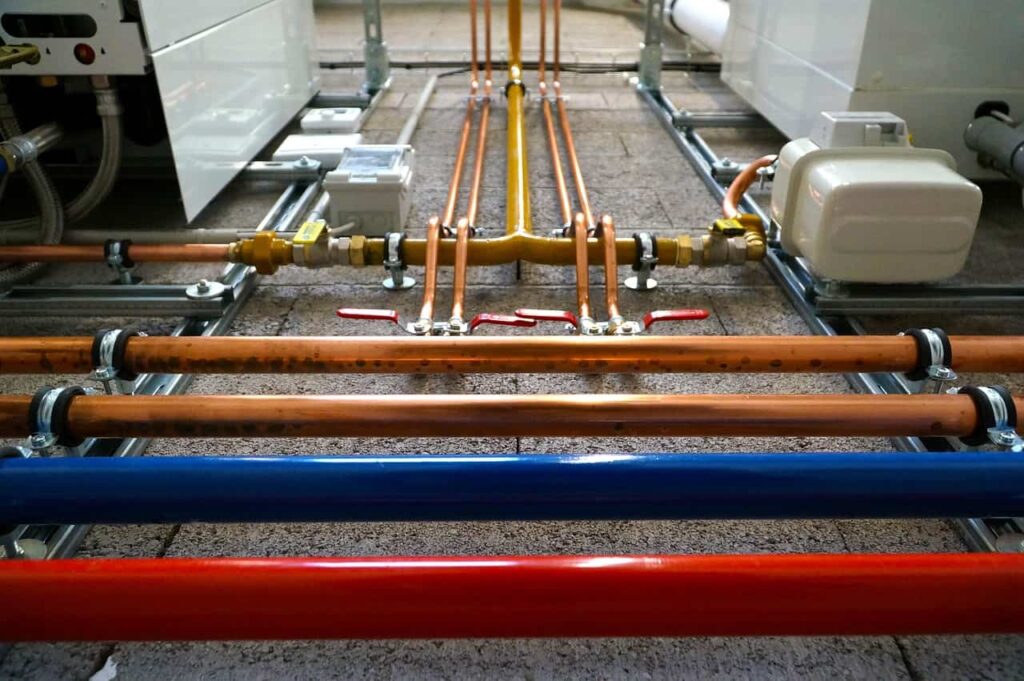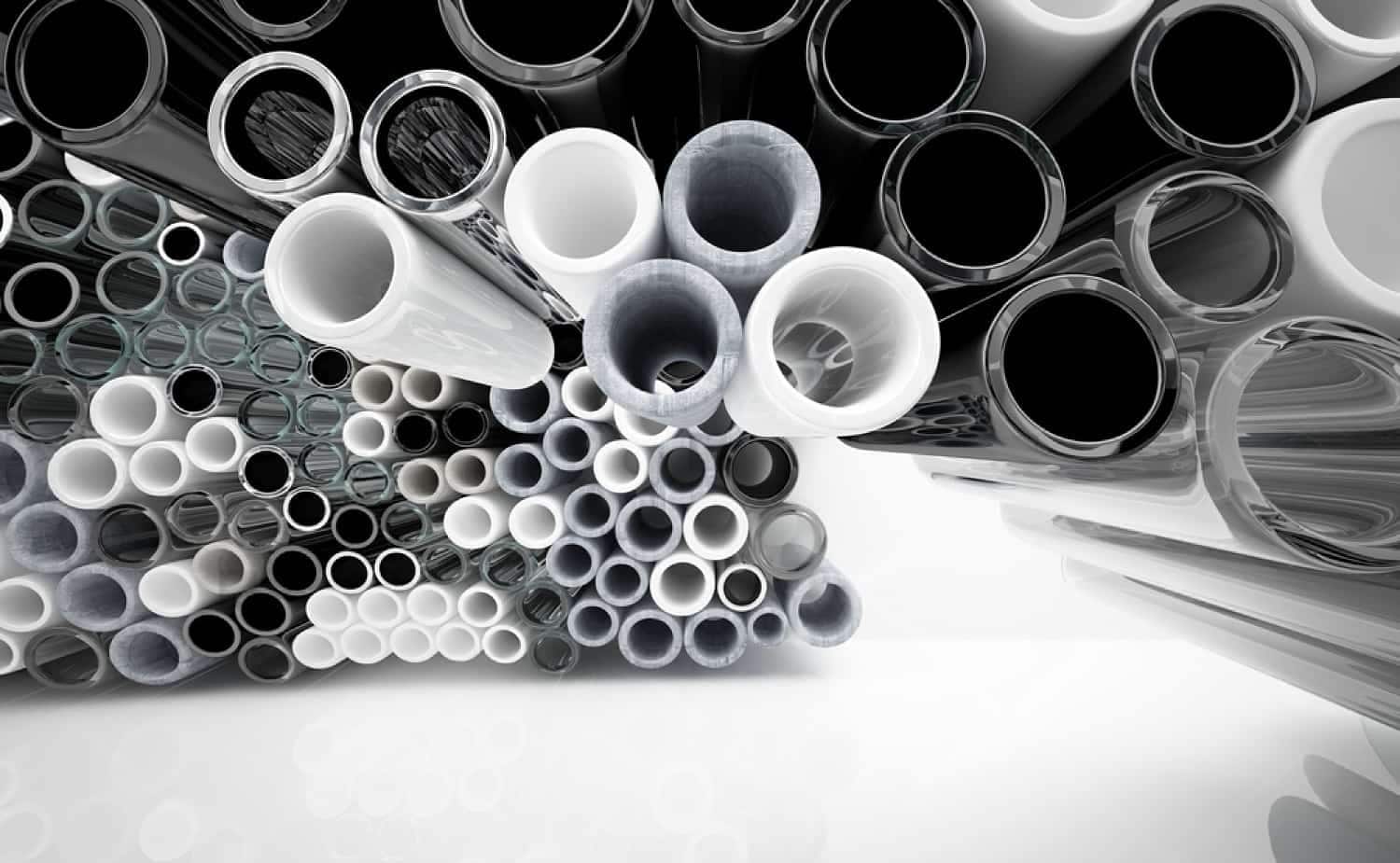Introduction: The Unseen Network Beneath Your Home
Your home’s plumbing system works like a hidden highway. Every day, water flows through pipes behind your walls and under your floors. These pipes bring clean drinking water to your taps and carry waste water away from your home.
Learning about the different types of plumbing pipes helps you make smart choices for your home. When you know about pipe materials and their uses, you can pick the best option for your plumbing needs. This knowledge also helps you find problems early and talk with plumbing services about repairs.
Why Pipe Material Matters in Residential Plumbing
The type of pipe material you choose affects your whole plumbing system. Here’s why pipe material matters so much:
Durability and Longevity
Different pipe materials last for different lengths of time. Some pipes can work well for over 50 years, while others may need replacement in 20 years. The pipe lifespan in homes depends on the material, water quality, and how well you maintain the system.
Water Pressure and Flow
The inside surface of your water pipe affects how water moves through it. Smooth pipes help water flow better, giving you good water pressure. Rough or corroded pipes can slow down water flow and reduce pressure at your taps.
Cost and Installation
Some pipe materials cost more to buy but are easier to install. Others may be cheaper but need special tools or skills to install properly. The total cost includes both the pipe material and the work needed to put it in place.

Common Types of Plumbing Pipes in Homes
There are five main types of pipes used in plumbing systems today. Each type of plumbing pipe has its own benefits and uses.
Copper Pipes
Copper plumbing pipes are a trusted choice for water supply lines. These metal pipes have been used in plumbing for many years.
Used for: Hot and cold water supply lines
Benefits:
- Last 50+ years with proper care
- Fight off bacteria growth
- Work well with potable water systems
- Handle high water pressure well
Drawbacks:
- Cost more than plastic pipes
- Need special tools for installation
- Can burst if water freezes inside
- May make noise when water flows through
There are two main types of copper pipes: rigid copper pipes and flexible copper tubing. Rigid copper pipes work best for main water distribution lines in your home.
PEX Pipes
PEX pipes (cross-linked polyethylene pipes) are a popular choice for modern plumbing projects. These flexible plastic pipes are easy to work with and cost less than copper.
Used for: Water supply lines for hot and cold water
Benefits:
- Bend around corners without extra fittings
- Cost less than copper pipes
- Don’t break when water freezes
- Work quietly in your walls
- Easy to install, even in tight spaces
Drawbacks:
- Can’t be used outdoors where sun hits them
- Animals might chew through them
- Need special fittings to connect
PEX pipe is also great for fixing old plumbing in older homes because it fits through small spaces.
PVC Plumbing Pipes
PVC pipes are white plastic pipes you often see in plumbing applications. These pipes work well for moving water that isn’t hot.
Used for: Drain lines, vent pipes, and cold water in some cases
Benefits:
- Very light and easy to carry
- Cost much less than metal pipes
- Easy to cut and join together
- Never rust or corrode
Drawbacks:
- Can’t handle hot water
- May crack in very cold weather
- Not good for high-pressure water systems
CPVC vs PVC
CPVC pipes look like PVC pipes but can handle hot water. The main difference between CPVC vs PVC is that CPVC pipe can carry both hot and cold water safely.
Used for: Hot and cold water supply systems
Benefits:
- Handle hot water better than regular PVC
- Fight off chemicals in water
- Cost less than copper pipes
Drawbacks:
- Not as flexible as PEX pipes
- Can become brittle over time
- Need special glue to join pieces
ABS Pipes
ABS pipes are black plastic pipes used mainly for drainage. These pipes are common in residential and commercial plumbing for waste systems.
Used for: Drain, waste, and vent systems
Benefits:
- Strong and hard to break
- Easy to install with one-step glue
- Handle impact well
- Good for plumbing in residential settings
Drawbacks:
- Can warp if left in direct sunlight
- Make more noise than some other drain pipes
- Not used for drinking water systems
Galvanized Steel Pipes
Galvanized pipes are steel pipes covered with zinc to prevent rust. You’ll find these mainly in older homes built before 1960.
Used for: Water supply in older plumbing systems
Benefits:
- Very strong and rigid
- Handle high water pressure
Drawbacks:
- Rust from the inside over time
- Reduce water flow as they age
- Heavy and hard to work with
- May put rust in your drinking water
Most plumbing services recommend replacing galvanized steel pipes in older homes. If you’re experiencing water pressure issues due to old pipes, water pressure regulator services can help restore proper flow throughout your home.
Cast Iron Pipes
Cast iron pipes are heavy metal pipes used mainly for drainage in older buildings.
Used for: Drain and sewer lines, especially in multi-story buildings
Benefits:
- Very quiet for drain systems
- Last a long time for waste lines
- Handle heavy loads well
Drawbacks:
- Extremely heavy to work with
- Rust on the outside if coating wears off
- Hard to cut and install
- Expensive to replace
Choosing the Right Plumbing Pipes
Picking the right pipe for your plumbing needs depends on several things:
| Use | Best Pipe Types | Why |
|---|---|---|
| Hot water supply | Copper, PEX, CPVC | Handle high temperatures safely |
| Cold water supply | Copper, PEX, PVC, CPVC | All work well for cold water |
| Drain lines | PVC, ABS, Cast Iron | Good for waste water removal |
| Main water lines | Copper, PEX | Handle high pressure well |
Water Supply vs. Drainage
Water supply lines need different pipes than drainage systems. Supply lines carry clean drinking water under pressure. Drain lines carry waste water away by gravity. Each system has different needs for pipe materials.
For drainage issues, you might need drain cleaning and unclogging services to keep your system flowing properly.
Local Building Codes
Your local building codes tell you which pipes you can use. These rules make sure your plumbing system is safe. Always check with local authorities before starting any plumbing project.
Longevity vs. Upfront Cost
Sometimes paying more at first saves money later. Copper pipes cost more than plastic pipes but last much longer. Think about how long you’ll live in your home when choosing pipe materials.
When to Replace Old Plumbing Pipes
Watch for these signs that your pipes may need replacement:
- Discolored water – Brown or yellow water means pipe corrosion
- Frequent leaks – Old pipes develop more leaks over time
- Low water pressure – Clogged or corroded pipes reduce flow
- Strange noises – Banging or whistling sounds from pipes
- Visible rust or corrosion – You can see problems on exposed pipes
If you’re dealing with burst pipe repair costs, it may be more cost-effective to replace the entire section rather than keep patching leaks.
Pipe Lifespan Guide:
- Copper pipes: 50-70 years
- PEX pipes: 25-40 years
- PVC pipes: 25-40 years
- Galvanized pipes: 20-50 years
- Cast iron pipes: 50-100 years (for drains)
Upgrading old pipes improves water quality, raises home value, and prevents costly water damage.
Maintaining Your Residential Plumbing Pipes
Good maintenance helps all types of pipes last longer:
Regular Inspections:
- Check exposed pipes for leaks or damage
- Look for water stains on walls or ceilings
- Test water pressure at different taps
- Listen for unusual sounds in the pipes
Preventing Problems:
- Don’t pour grease down drains
- Use drain screens to catch hair and debris
- Keep pipes warm in winter to prevent freezing
- Have your water tested if you notice changes in taste or color
If you notice any of these issues, consider professional leak detection and repair services to find and fix problems before they cause major damage.
Professional Help for Pipe Installation or Replacement
Some plumbing work needs professional help. Pipe Dream Rooter & Plumbing offers expert services for all your plumbing needs in Los Angeles, CA. Our team knows local building codes and has experience with all common types of plumbing pipes.
We help with:
- Professional pipe installation for your home for new construction
- Pipe replacement services for old galvanized or clay pipes
- Upgrading to modern pipe materials
- Reliable pipe repair services for emergency fixes
- Whole-house repiping projects
Our plumbing services cover both residential and commercial plumbing systems. We make sure all work meets local codes for safe, long-lasting results.
Conclusion: Invest in Your Home’s Foundation
Learning about different plumbing pipe materials helps you make smart choices for your home. Whether you need new supply lines or want to upgrade old drainage pipes, knowing about different types of pipes helps you plan better.
The right pipe material depends on your specific plumbing systems, local codes, and budget. Modern options like PEX and CPVC offer good value, while copper pipes provide long-term reliability.
Don’t wait for pipe problems to get worse. Contact Pipe Dream Rooter & Plumbing today for expert advice on your plumbing pipe needs. We’ll help you choose the best materials and install them properly for years of reliable service. Request a free quote to get started on your plumbing project.
FAQs about Plumbing Pipes
Q1: What is the most durable plumbing pipe for homes?
Copper pipes are the most durable for water supply, lasting 50-70 years. For drain lines, cast iron pipes can last 50-100 years but are heavy and expensive.
Q2: Is PEX better than copper for water supply lines?
PEX costs less and is easier to install than copper. Copper lasts longer and handles higher temperatures. Both work well for most homes.
Q3: Can I use PVC for hot water lines?
No, regular PVC pipes can’t handle hot water. Use CPVC, PEX, or copper pipes for hot water supply lines.
Q4: What types of pipes are best for drain lines?
PVC and ABS pipes work well for most drain systems. Cast iron pipes are best for quiet operation but cost more to install.
Q5: How long do plumbing pipes usually last?
Pipe lifespan depends on the material. Copper lasts 50-70 years, plastic pipes last 25-40 years, and galvanized steel lasts 20-50 years before needing replacement.








2 thoughts on “Understanding the Different Types of Plumbing Pipes Used in Homes”